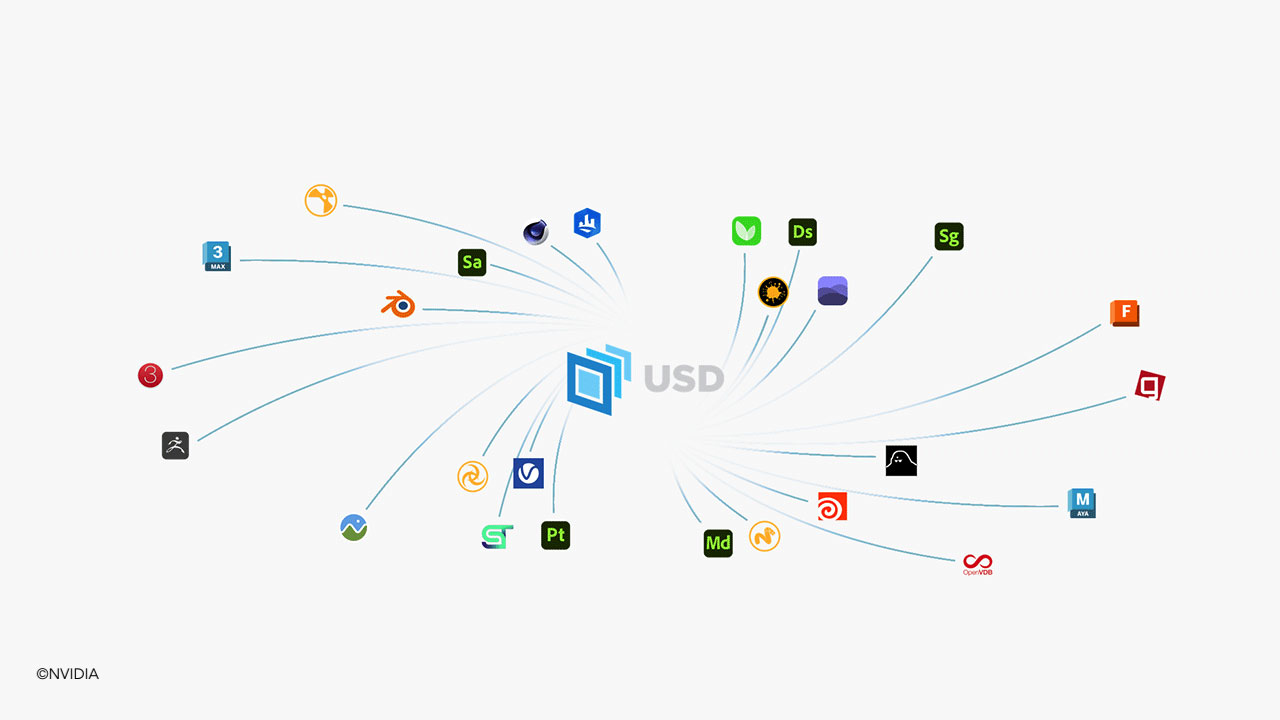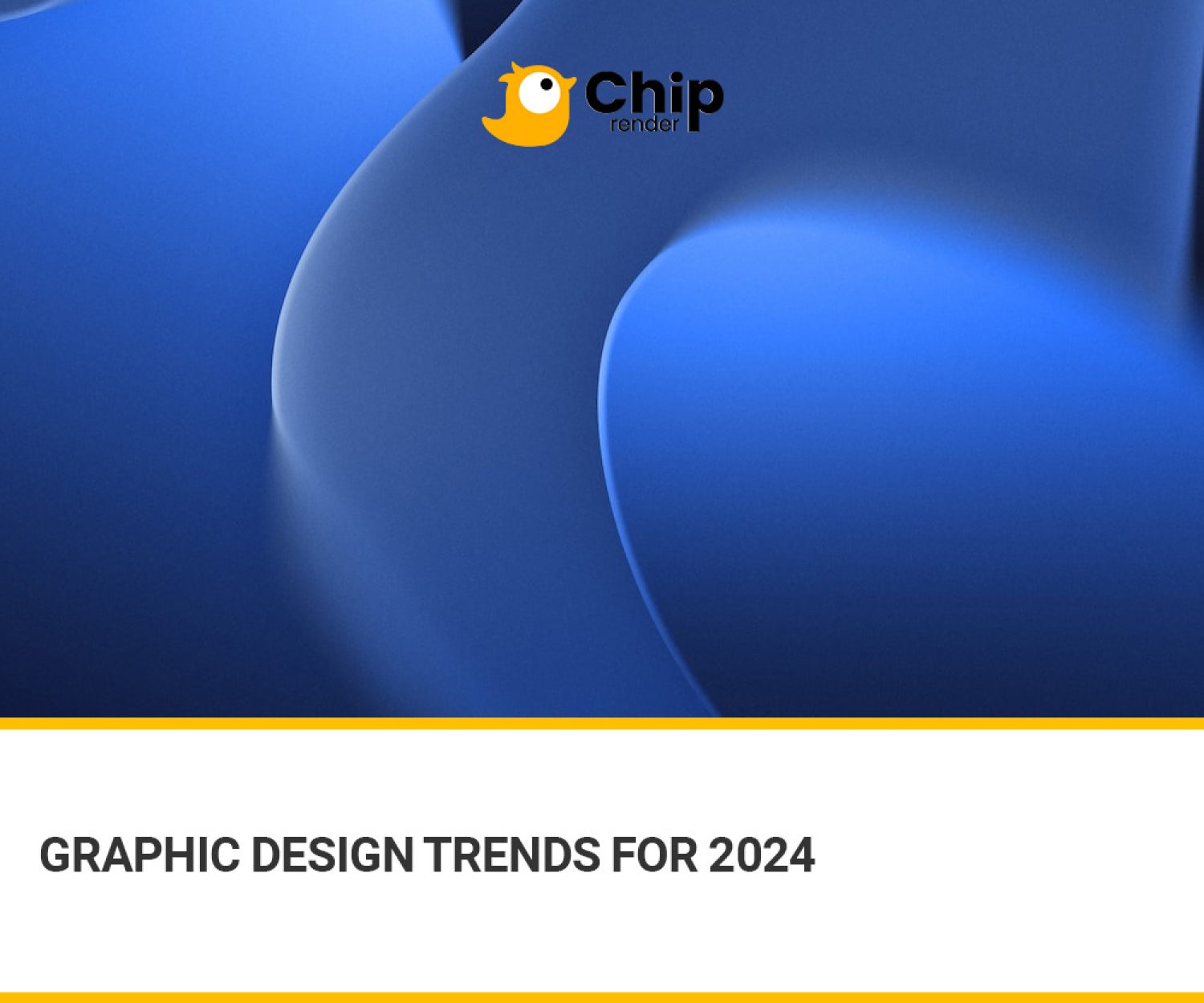What is OpenUSD, and why is it so important for developers, artists, and designers? Join Chip Render in this post to discover the answer.
As digital artistry and technological innovation continue to push the boundaries of what is possible in 3D entertainment, Pixar’s Universal Scene Description (OpenUSD) tool has emerged as a vital player in this changing field.
What is OpenUSD?
Universal Scene Description, also known as USD or OpenUSD, is an open-source and extensible framework for building, modifying, querying, rendering, collaborating, and simulating in 3D worlds. OpenUSD is more than just a file format. It is an ecosystem and interchange paradigm that models, labels, categorizes, and merges a diverse set of data sources to provide a unified ground truth.
Originally developed by Pixar Animation Studios, OpenUSD began in visual effects, feature animation, and game development pipelines. Now, it is increasingly adopted in various industries, ranging from architecture, design, and CAD to manufacturing, robotics, retail, and more. The scalability and interoperability of the OpenUSD framework have enabled developers, artists, and designers to easily develop high-fidelity, real-world simulations using collaborative and non-destructive authoring.

Image Credit: Elementor – Disney/Pixar
Journey of OpenUSD
OpenUSD’s journey traces back to the challenges faced during the production of Toy Story. By 2004, Pixar recognized the need to address the limitations of their existing animation system, Marionette, which had been in use since A Bug’s Life. Between 2008 and 2009, the development of TidScene marked a significant leap in scene description and data management, providing the groundwork for OpenUSD’s architecture.
This intensive R&D phase culminated in 2012 with the launch of the USD project. This project aims to integrate and refine Pixar’s technological advancements into a unified system.
In 2016, Pixar Animation Studios decided to open source USD, making their groundbreaking innovations accessible to the entire industry. Fast forward to 2023, USD was officially renamed OpenUSD as it is being used now.
The Alliance for OpenUSD (AOUSD)
In August 2023, Pixar, Adobe, Apple, Autodesk, and NVIDIA formed the Alliance for OpenUSD (AOUSD) to standardize and further develop OpenUSD 3D data specifications and technologies. This collaboration seeks to promote 3D interoperability, which will benefit 3D content creation workflows, industrial digitalization, and graphics experiences such as spatial computing.
Later, many companies from across a range of industries joined the Alliance as general members. New AOUSD members include software developers (Chaos, Epic Games, Foundry, Maxon, Otoy, SideFX, Trimble), CAD modeling technology firms (Spatial), retailers (IKEA, Lowe’s), and tech giants (Intel, Hexagon, Meta, Sony), and more.

General Members of AOUSD
AOUSD’s core initiatives are the standardization, development, evolution, and growth of Pixar’s Universal Scene Description technology. The Alliance brings together an extensive and supportive community of contributors to create an open forum for collaborative development and discussion of OpenUSD.
What software applications support OpenUSD?
Many software applications support OpenUSD, including:
- 3D software: Maya, 3ds Max, Cinema 4D, Houdini, Blender, Unreal Engine, Unity, Katana, Nuke, Modo, and Revit.
- Render engine: AMD ProRender, Arnold, Cycles, V-Ray, and Redshift.
- NVIDIA Omniverse, which is based on OpenUSD.

A wide range of applications support OpenUSD. Image Credit: NVIDIA
You can find more applications using OpenUSD on the OpenUSD website.
Why use OpenUSD?
Interoperability and Collaboration
OpenUSD improves the interoperability of 3D tools and data, making it easier to interchange assets and data across different software programs. This is extremely important for effective collaboration across different teams.
Non-Destructive Workflows
OpenUSD enables non-destructive workflows, which let artists and designers make adjustments and iterations without permanently modifying the original data. This boosts productivity while encouraging creative exploration and iteration.
Extensibility
OpenUSD is built to be extensible, enabling developers to support custom schemas, file formats, and more via a rich plug-in system. This versatility assures that OpenUSD can meet future industry needs.
Industry-wide support
The Alliance for OpenUSD is composed of renowned industry partners such as Pixar, Adobe, Apple, NVIDIA, and Autodesk. Many more significant companies are joining to make OpenUSD the industry standard.
Organized asset files
OpenUSD’s asset resolver is file-system agnostic. It facilitates the organization, management, and quick access to digital assets no matter the data storage model or data sources used.
Useful Render
The Hydra rendering architecture in OpenUSD allows for greater visualization flexibility by working with custom and third-party renderer plugins supplied by a variety of software companies.
Fundamentals of OpenUSD
Stage
A Stage in OpenUSD is a 3D scene made up of one or more OpenUSD layers. A 3D scene is composed of data like geometry, materials, and animations.
Prim
A Prim is a fundamental building block in OpenUSD that represents a single object or element in a 3D scene. For example, a prim can be a mesh, a material, or a light.
Property
A Property refers to a piece of named data associated with a Prim. For instance, a mesh’s position in a scene. The term “Property” generally refers to two different types of Prim data: Attributes and Relationships.
Attribute
An Attribute is a type of Property that can include data of a specific type such as integer, boolean, float, float array, etc. An attribute can be a mesh’s position in a 3D scene or its display color. An attribute’s value can change over time in order to produce an animated output. Time-varying values are referred to as time samples.
Relationship
In OpenUSD, a Relationship is a type of Property that can refer to one or more prims or properties. For instance, a Relationship can be a material binding or assignment on a mesh. A mesh can have a material:binding Relationship that points to the bound material Prim.
Summary: What is USD?
In summary, OpenUSD is a scalable, collaborative framework for exchanging 3D scene data. OpenUSD’s use and significance now extends beyond film, visual effects, and animation to other industries that increasingly rely on 3D data for media interchange. It has become a fundamental building block in the age of AI and the Metaverse.
 Chip Render Farm is one of very few cloud render farms that supports OpenUSD. Easy of use, fast rendering, affordable prices, dedicated support, and especially full control – we give artists all they need to meet their on-demand rendering. Join Chip Render now and have your own Cloud Workstation with 1/2/4 x GPU RTX 3090 only from $2.9.
Chip Render Farm is one of very few cloud render farms that supports OpenUSD. Easy of use, fast rendering, affordable prices, dedicated support, and especially full control – we give artists all they need to meet their on-demand rendering. Join Chip Render now and have your own Cloud Workstation with 1/2/4 x GPU RTX 3090 only from $2.9.




